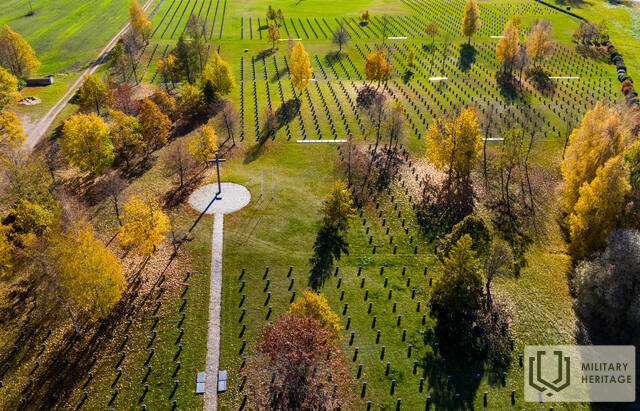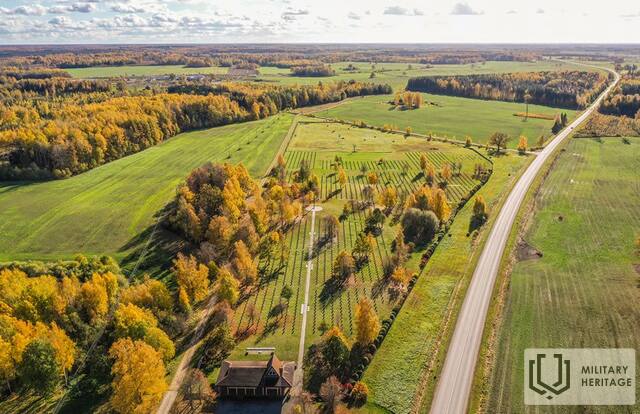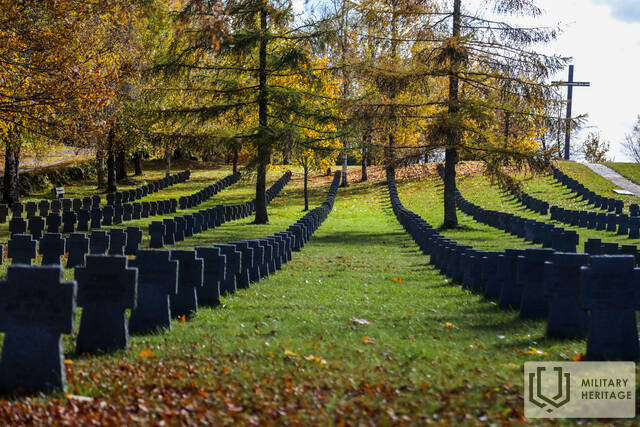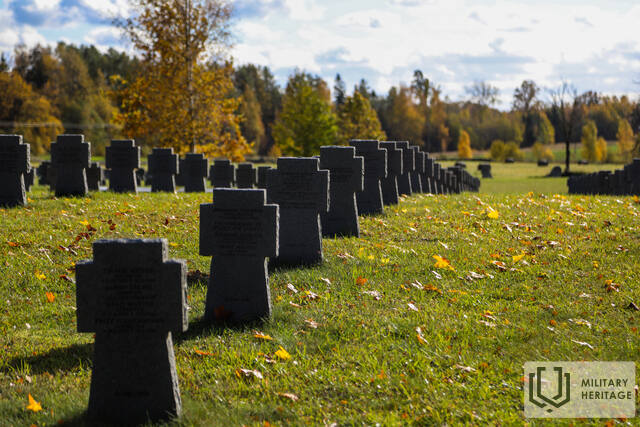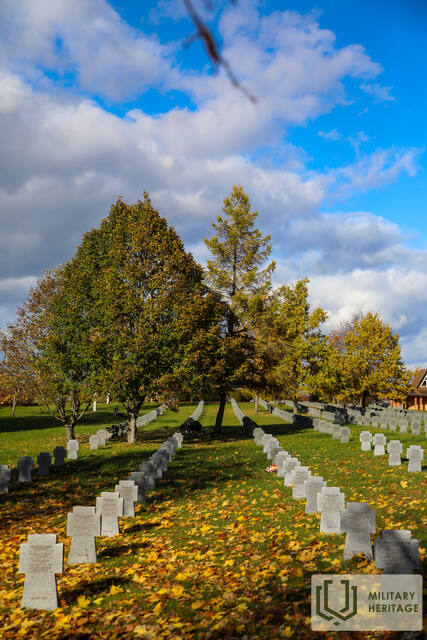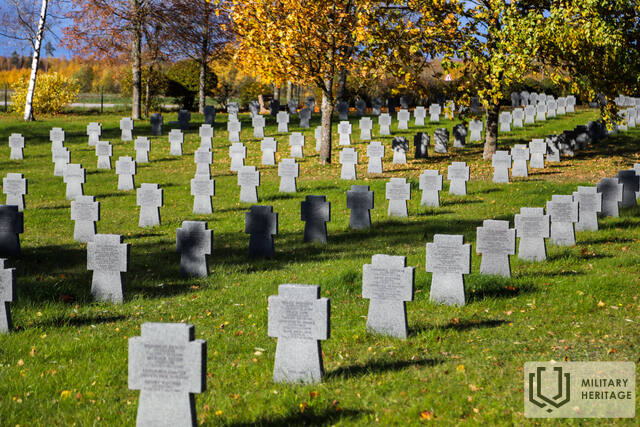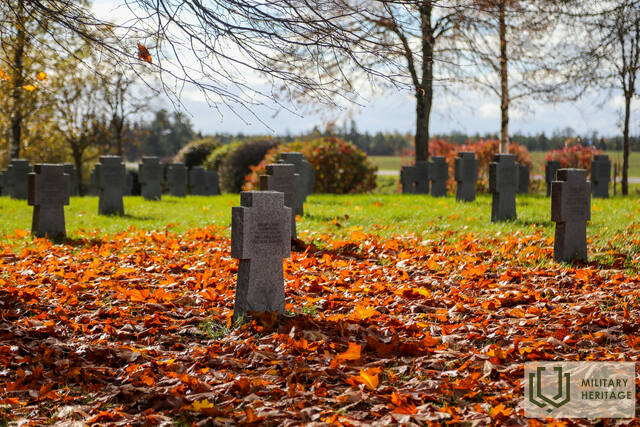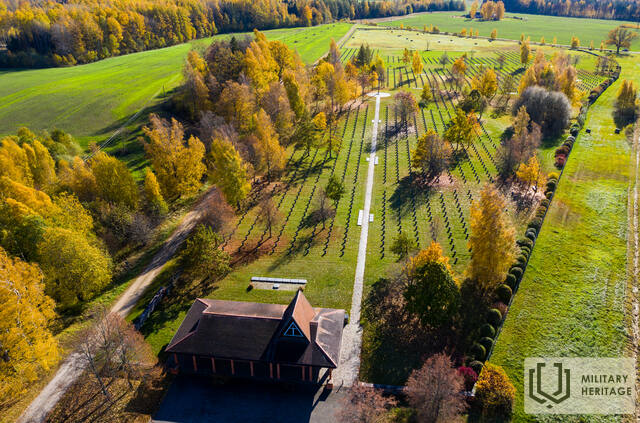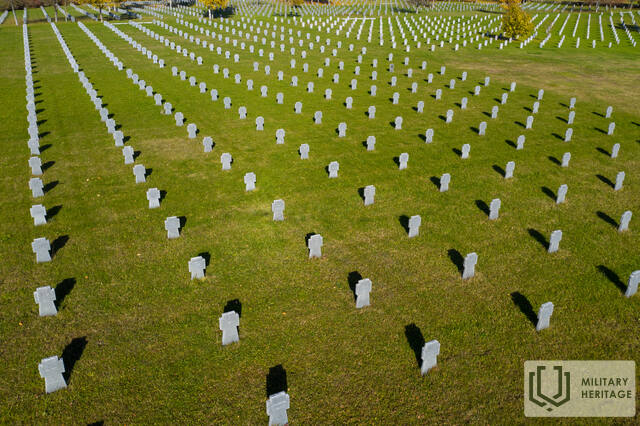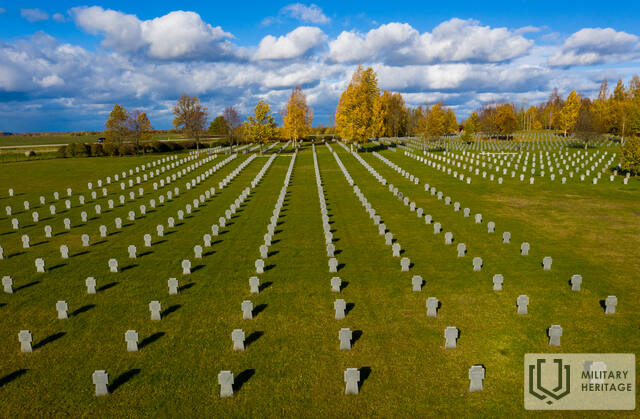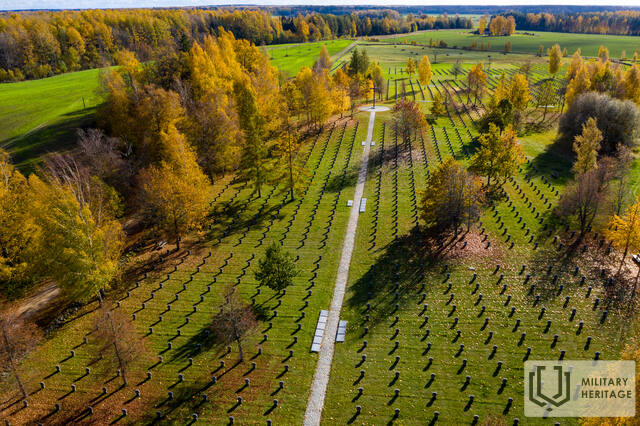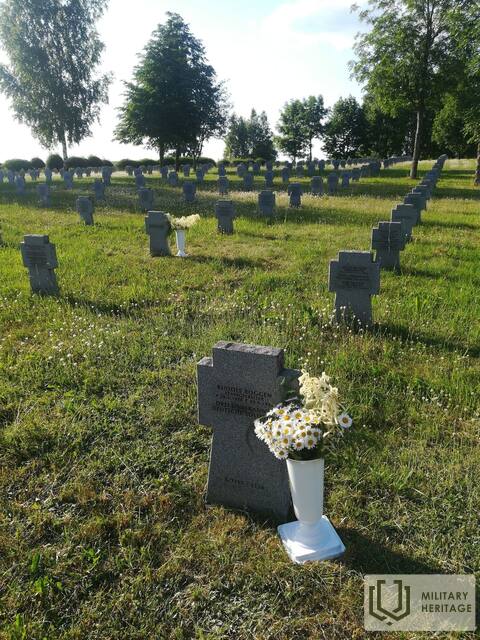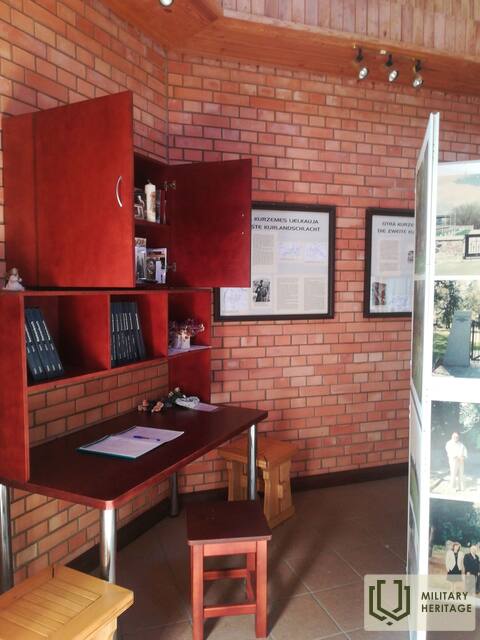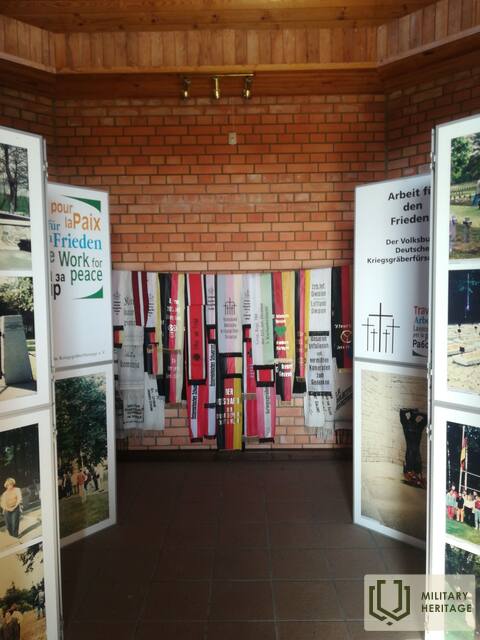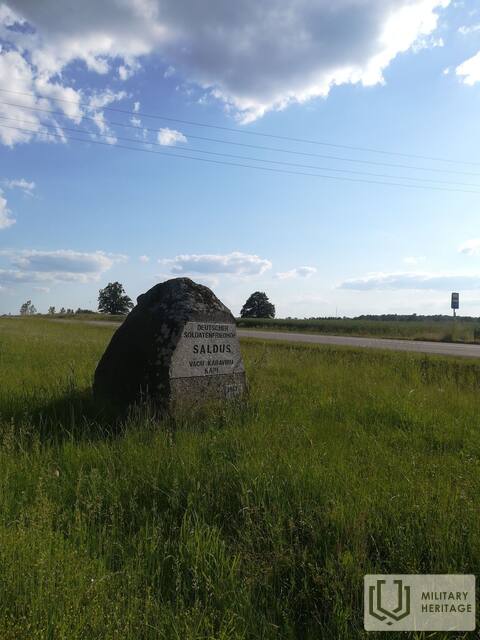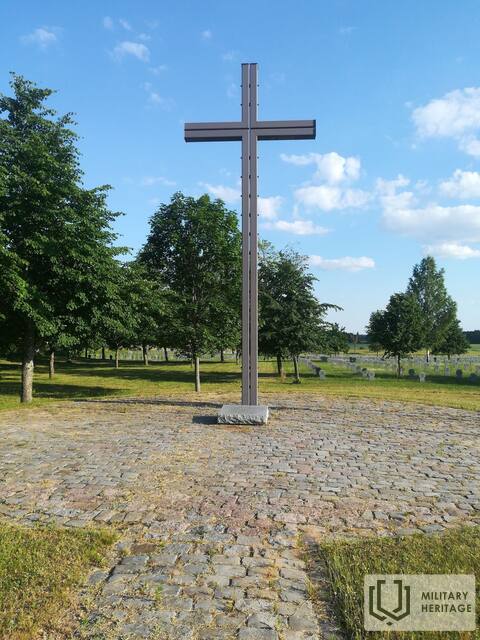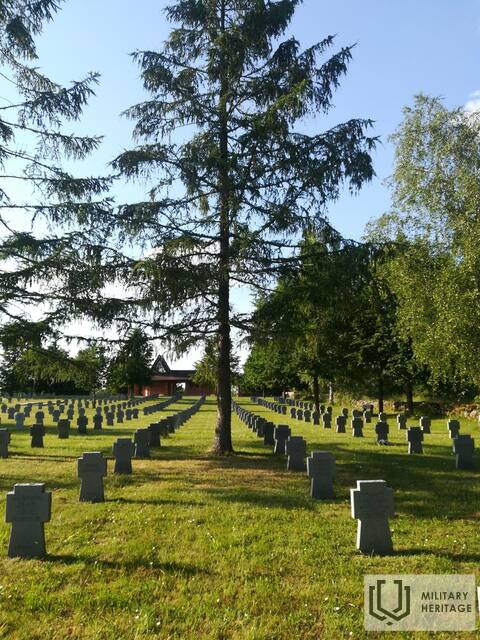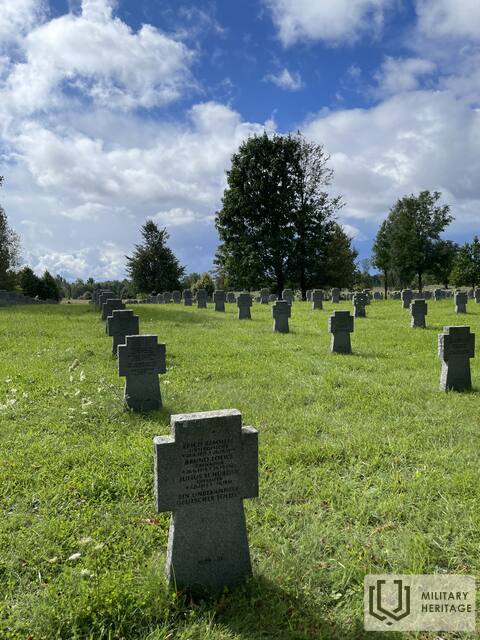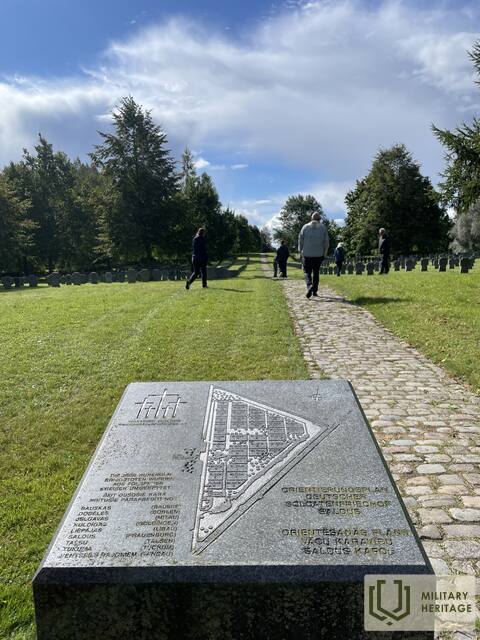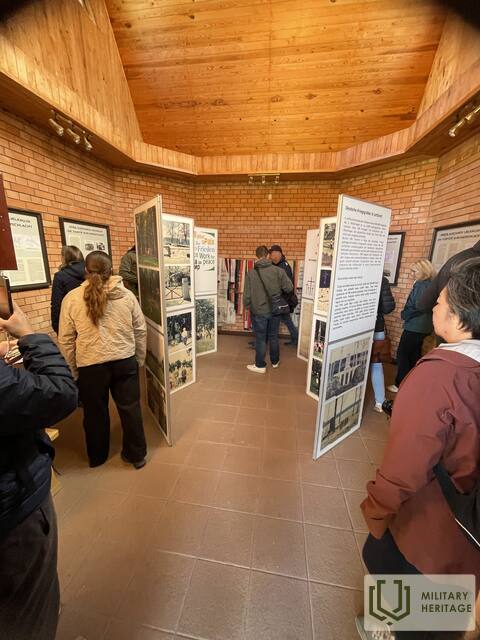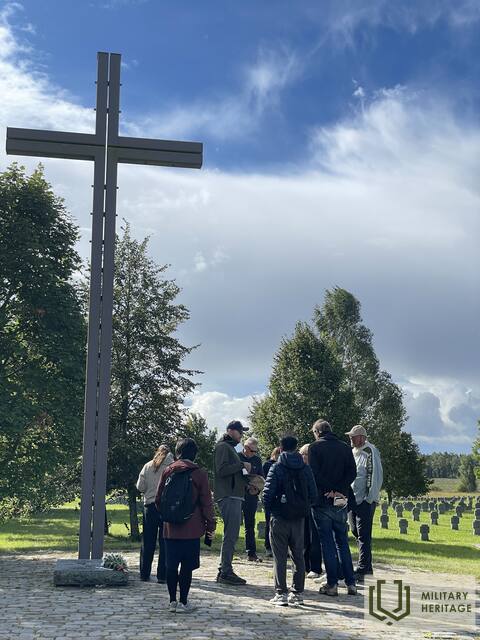Saldus German Soldiers' Cemetery Memorial site

The Saldus German Soldiers' Cemetery is located on the Saldus–Ezeres highway. The cemetery, which covers an area of 8 hectares, contains the remains of around 25,000 German soldiers, as well as some Latvian legionnaires. Reburials have been taking place since 1997.
From May 1 to October 1, an exhibition about the battles of Courland can be viewed in the memorial room. During this period, the memorial room is open on weekdays from 9:00 to 17:00, and on Saturdays and Sundays a guide is also working in the cemetery. Registers of soldiers buried in the Saldus German soldiers' cemetery and soldiers who fell throughout Latvia are also available.
Used sources and references:
https://turisms.saldus.lv/kur-doties/ko-skatit/pieminas-vietas/
Related timeline
Related stories
"The war is not over until the last soldier is buried" (Saldus German Soldiers' Cemetery)
Kurzeme emerged as a separate and distinct battlefield on 10 October 1944. Some 500 000 German troops were counted as surrounded. According to reports from the 1st Baltic Front Headquarters, only a "small effort" was needed to completely liberate the entire Baltic coast. However, the fighting in Kurland continued for another seven months and Kurland became a symbol of the end of the Second World War.
During the seven months of fighting until May 1945, German forces in Courland lost 154 108 soldiers killed, wounded and missing. Since 1997, a war cemetery survey and reburial of soldiers near Saldus has been carried out and currently 27,000 names of fallen soldiers can be found here
Missing German soldiers during the Battle of Courland - Karl Grimm
The records of the German army group "North", later renamed "Kurland" during the siege of Courland, still do not contain clear information about the approximately 50 000 German soldiers. These soldiers are listed as missing. Even today, the relatives of these soldiers are trying to find traces of their relatives and ancestors in Kurland, both documentary and physical. One such story is that of Karl Grimm, a German soldier from Swabia (a historical region in south-west Germany, at the source of the Rhine and Danube rivers), whose war career was cut short on 27 October 1944 at the Krūmi home near Vaiņode (5 km to the NW from Vaiņode, Latvia)
Missing German Army Soldiers During the Battles of Courland - Herman Fauls
The documentation of the German Army Group "North", which was later renamed "Kurland" during the siege of Kurzeme, still does not contain clear information about approximately 50,000 German army soldiers. These soldiers are listed as missing in action. Even today, relatives of these soldiers are trying to find traces of their relatives and ancestors in Kurzeme, both documentary and physical. One such story is about Herman Faul, who has been missing since December 27, 1944 - the 3rd Battle of Kurzeme, or Christmas Battles.
"Digging is better than burrial!"
The order of the Army Group “Kurland” is: "Build and build!" It is a task for every soldier of the front of the rear services. Which is best marked by the word: "Digging is better than burrial!"
Pieta or "Māmuļa" Memorial Ensemble in Nīkrāce
Pieta, or Mammy, is a well-known motif in European culture and art, and was also used in Soviet times.
Ashtray with panther head from German fortification lines
The last fortification lines of the army group "Kurzeme" were located in the vicinity of Krotė and many objects related to the Second World War have been found there.
Memories of Jānis Miesnieks, a native of Ezera, about the end of World War II in Ezera
The Ezere Cultural History and Local History Museum "Customs House" is located in a historically significant building. On May 8, 1945, the act of capitulation of the Nazi German army units encircled on the Kurzeme Front was signed here.
Former Ezer resident Jānis Miesnieks (born 1930) shares his memories of the events of that day.




